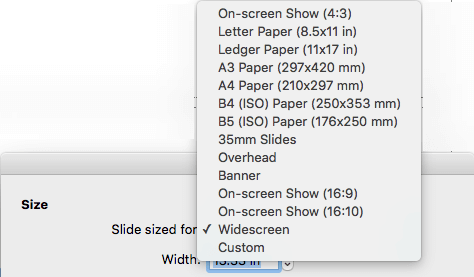The a4 document size is a standardized paper size that is commonly used for printing and writing. It is defined as 210 millimeters (8.27 inches) wide and 297 millimeters (11.69 inches) tall. The a4 size is part of the ISO 216 international paper size standard, which defines a series of paper sizes based on the aspect ratio of the square root of 2. This article will explore the significance of the A4 document size in design, business, and communication, as well as its historical evolution and future trends.
The Universal Standard: A4 Document Size in the Global Business Landscape

Importance of A4 in Printing and Writing
The A4 document size is widely recognized and used across the globe, making it a universal standard for various business applications. Its dimensions provide ample space for content while ensuring readability and portability. Professionals rely on the A4 size for creating documents such as letters, contracts, reports, and presentations due to its versatility and compatibility with standard office equipment.
Advantages of A4 for Design and Layout
Designers appreciate the A4 size for its balanced proportions and ease of scaling. Whether designing brochures, flyers, or promotional materials, working within the constraints of the A4 dimensions allows for efficient layout planning and grid systems. The uniformity of A4 also simplifies the process of creating templates and mock-ups for different projects.
Table: A4 vs. Other Common Paper Sizes
| Paper Size | Dimensions (mm) | Dimensions (in) |
|---|---|---|
| A4 | 210 x 297 | 8.27 x 11.69 |
| Letter | 216 x 279 | 8.5 x 11 |
| Legal | 216 x 356 | 8.5 x 14 |
Optimizing A4 Documents: Tips for Effective Design and Communication

Considerations for Text and Images
When creating A4 documents, it is essential to balance text and images to maintain visual appeal and readability. Proper margins, font sizes, and line spacing can enhance the overall aesthetics of the document. For images, ensure high resolution and appropriate placement to complement the text effectively.
Layout and Hierarchy
Establishing a clear hierarchy of information is crucial in A4 document design. Use headings, subheadings, and bullet points to structure content logically and guide the reader through the document. Pay attention to alignment, spacing, and consistency to create a professional and organized layout.
List: Top Design Tips for A4 Documents
- Use a grid system for layout consistency.
- Incorporate white space for visual breathing room.
- Choose a cohesive color palette and typography for branding.
- Proofread content thoroughly for accuracy and clarity.
The Science Behind A4: Exploring the ISO Standardization Process
In 1975, the International Organization for Standardization (ISO) adopted the A4 size as an international standard, formalizing its use in various industries worldwide. The ISO 216 standard establishes the relationship between paper sizes by maintaining the aspect ratio of 1:√2. This mathematical principle ensures that each paper size can be scaled or reduced uniformly without losing its proportions.
Benefits of Standardization
Standardizing paper sizes like A4 streamlines processes in printing, binding, and document handling. It promotes consistency and interoperability among devices and software, reducing errors and compatibility issues. The ISO standardization process enhances efficiency and cost-effectiveness across industries that rely on paper-based communication.
Evolution of Paper Standards
The development of the ISO paper size system has a rich history dating back to the 18th century. The adoption of standard paper sizes aimed to improve international trade, simplify communication, and optimize resource usage. Today, the A4 document size stands as a testament to the success of harmonizing global practices through standardization.
Conclusion: The A4 document size plays a pivotal role in facilitating communication and design standards worldwide. By adhering to the principles of the ISO standard, professionals can leverage the benefits of consistency, efficiency, and compatibility in their everyday work.Embracing the A4 size as a universal standard empowers individuals and businesses to communicate effectively and create impactful visuals across diverse contexts.# A4 Document Size in Different Regions: Variations and Cultural Implications
The A4 document size, while widely accepted as a standard in many parts of the world, does have variations and cultural implications based on regional preferences and historical influences. Understanding how different regions approach paper sizes can provide valuable insights into design practices and communication norms.
Regional Paper Size Preferences
North America
In North America, the Letter (8.5 x 11 inches) and Legal (8.5 x 14 inches) paper sizes are more commonly used than the A4 size. The historical adoption of these sizes dates back to colonial times and has become deeply ingrained in business and legal documentation.
Asia
Countries in Asia often use a mix of paper sizes, with the A4 size gaining popularity due to globalization and standardization efforts. However, traditional paper sizes such as the JIS B series in Japan and the Chinese National Standard (CNS) in China still hold significance in certain contexts.
Europe
Given the origins of the ISO standard in Europe, the A4 size is prevalent across the continent. European countries have embraced the standardized paper sizes for consistency and compatibility in various industries, from publishing to administration.
Cultural Significance of Paper Sizes
Symbolism and Tradition
In some cultures, the choice of paper size carries symbolic meaning or reflects traditional practices. Larger paper sizes may be associated with prestige or formality, while smaller sizes could signify efficiency or attention to detail.
Communication Styles
The use of specific paper sizes can also influence communication styles and perceptions. For example, longer legal documents in the Legal size format may convey a sense of thoroughness and legality, whereas concise reports in A4 size might suggest clarity and brevity.
Adaptation and Hybridization
As global communication patterns evolve, regions may adapt their paper size preferences to align with international standards. Hybrid approaches that combine traditional sizes with standardized formats allow for flexibility and cross-cultural collaboration.
Future Trends in a4 paper Size: Digitalization and Its Influence
The digital transformation of workplaces and communication channels is reshaping the way A4 documents are created, shared, and archived. As technology continues to advance, the future trends surrounding the A4 paper size reflect a blend of traditional practices and innovative solutions.
Digital Integration of A4 Documents
Virtual Collaboration
With the rise of remote work and online collaboration tools, A4 documents are increasingly digitized for seamless sharing and editing. Digital platforms enable real-time feedback, version control, and cloud storage of A4 files, streamlining workflows and enhancing productivity.
Interactive Features
Beyond static printouts, A4 documents in digital formats can incorporate interactive elements such as hyperlinks, multimedia content, and responsive design. Interactive PDFs and web-based presentations offer engaging experiences that go beyond the limitations of physical paper.
Sustainability Initiatives
Digitalization of A4 documents aligns with sustainability goals by reducing paper consumption, waste, and carbon footprint. Companies are transitioning to digital workflows to minimize environmental impact and promote eco-friendly practices in document management.
Augmented Reality (AR) Applications
Enhanced Visualization
AR technologies expand the possibilities of A4 documents by overlaying virtual information onto physical prints. Designers can showcase 3D models, animated graphics, and product simulations within A4 presentations, creating immersive and memorable experiences for audiences.
Interactive Training Modules
In educational and training contexts, A4-based AR applications offer interactive learning modules that combine printed materials with digital interactivity. Users can access additional resources, quizzes, and video tutorials by scanning A4 pages with AR-enabled devices.
Cross-Platform Compatibility
The integration of AR features into A4 documents bridges the gap between print and digital media, catering to diverse audience preferences. By leveraging AR technology, businesses and educators can deliver dynamic content that engages users across multiple platforms.
Best Practices for Utilizing A4 Document Size: Maximizing Productivity and Efficiency
Efficient utilization of the A4 document size requires adherence to best practices in design, content creation, and distribution. By following guidelines that enhance readability, visual appeal, and functionality, professionals can maximize the impact of A4 documents in various contexts.
Design Principles for A4 Documents
Consistent Branding
Maintain a cohesive visual identity across A4 documents by using consistent colors, fonts, and imagery that align with brand guidelines. Establishing a recognizable brand presence enhances credibility and reinforces brand awareness among audiences.
Accessibility Considerations
Ensure that A4 documents are accessible to diverse users, including those with visual impairments or disabilities. Use accessible fonts, adequate color contrast, and descriptive alt text for images to comply with accessibility standards and improve inclusivity.
Mobile Optimization
Optimize A4 documents for mobile viewing by designing responsive layouts that adapt to different screen sizes. Prioritize mobile user experience by organizing content logically, minimizing scrolling, and optimizing font sizes for readability on smaller devices.
Content Strategies for A4 Documents
Clear Messaging
Craft concise and compelling messaging in A4 documents to communicate key points effectively. Use headings, subheadings, and bullet points to structure information logically and guide readers through the content in a scannable format.
Visual Enhancements
Incorporate relevant visuals such as infographics, charts, and illustrations to supplement textual content and enhance understanding. Visual elements not only break up large blocks of text but also engage readers and reinforce key messages.
Call-to-Action (CTA)
Include clear calls-to-action in A4 documents to prompt desired responses from readers, whether it’s contacting your business, visiting a website, or making a purchase. Position CTAs strategically within the document and use compelling language to encourage engagement.
Conclusion
In conclusion, the A4 document size serves as a foundational element in design, business communication, and global standards. From its universal acceptance to its cultural variations and digital evolution, the A4 size continues to play a crucial role in facilitating efficient and effective document creation. By understanding the principles, best practices, and future trends surrounding A4 documents, designers and professionals can harness the full potential of this versatile paper size to achieve impactful and sustainable outcomes in their respective fields.